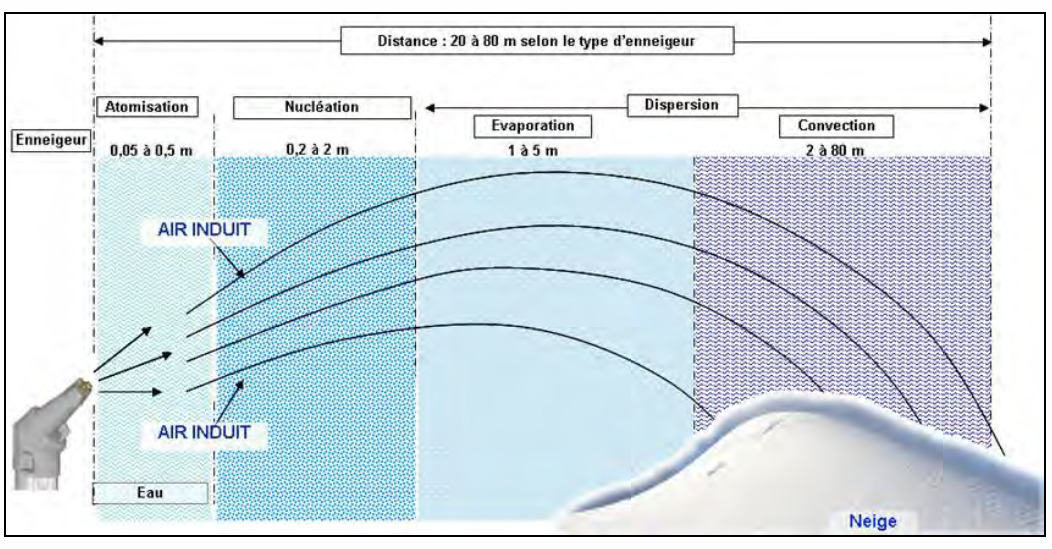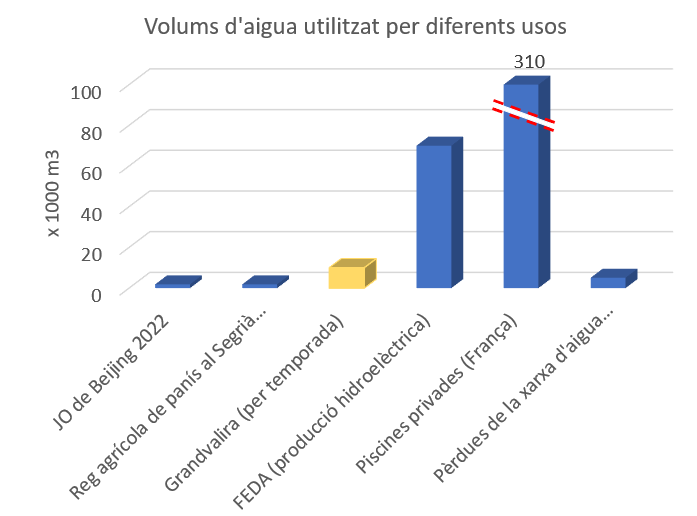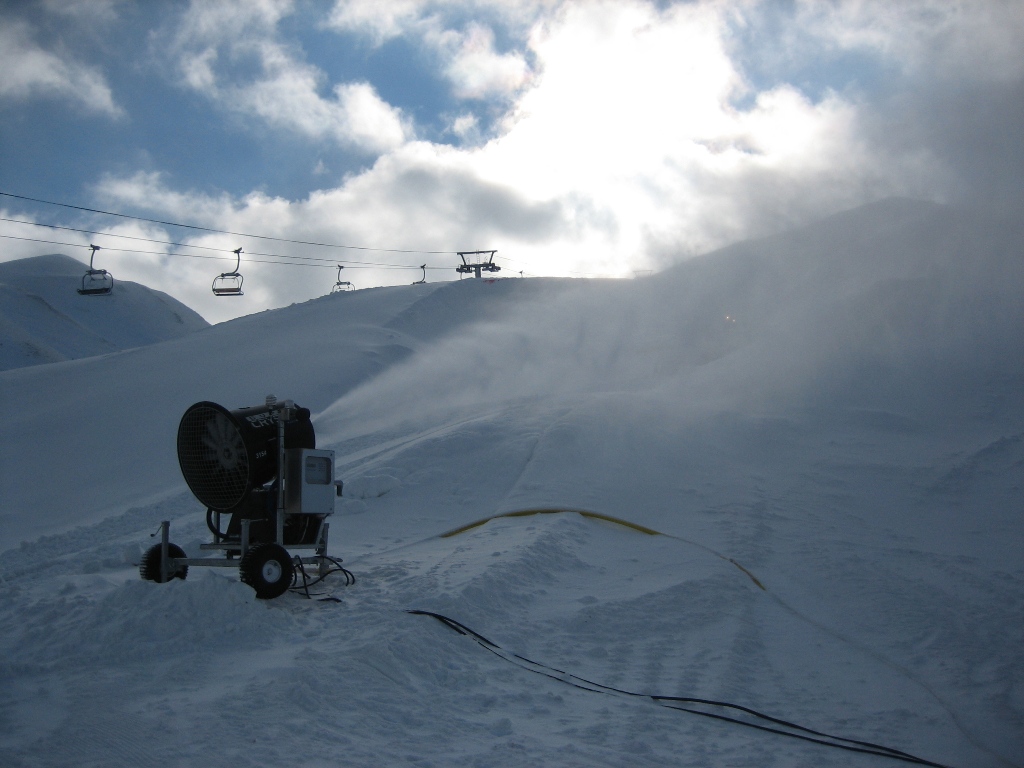
Myths and realities of snow production in ski resorts
In the current context of ski resorts, snow production is becoming more and more important. These systems allow:
-
Ensure the start of the ski season.
-
Extend the ski season.
-
Improve the quality of snow on the slopes (fewer ice sheets, fewer stones on surface, etc.).
-
Open slopes that may be essential for ski resorts operation, such as the base of the resorts, beginner areas, connections between sectors or competition tracks.
The graph below shows a study of ski season days from a ski resort in the Austrian Alps with three scenarios over several seasons:
-
Observed: That is, the actual opening days of the resort with the existing snowmaking system. It shows a homogenization over the years between 130 and 160 days per season.
-
Simulated: Estimation of opening days with the improvement and extension of the snowmaking system. There is an improvement especially in the years where snow natural precipitation is lower and a greater stabilization of opening days close to 160 days
-
Simulated without snowmaking: Estimation of opening days in case of not having a snowmaking system. There is a marked dependence on annual snowfall.
Illustration 1. Simulation of the duration of the season in three different scenarios. Source: Hanzer, F., et al., Distributed, explicit modeling of technical snow production for a ski area in the Schladming region
All these advantages not only affect the resorts but also to the nearby towns and regions where the ski areas are located, giving them greater economic and social stability (hotels, restaurants, shops, etc.).
Given the controversy generated around 2022 Beijing Olympics, where snow production has played an essential role, we want to clarify certain myths and realities related to snow production in ski resorts:
-
Concept of “Artificial” snow: Often the adjective “artificial” is attached to the production of snow to differentiate it from the “natural” snowfall. This adjective is incorrect and tendentious, since the snow produced is obtained by transforming pulverized water into ice crystals, in a totally natural process (freezing of pulverized water in a cold environment).
At the same time, cold air is projected to crystallize and agglomerate the droplets. This phenomenon corresponds to an adiabatic expansion of pulverized water. The following steps: atomization, nucleation, evaporation, and convection allow the snow creation from pulverized water, according to the following graph:
Illustration. Scheme of the different steps for snow production. Source: SNTF 2002
Certainly, the crystals generated do not have the characteristic and random shape of natural snowflakes but have suitable characteristics for skiing.
Below is the image of different natural snowflakes and those derived from snow production:
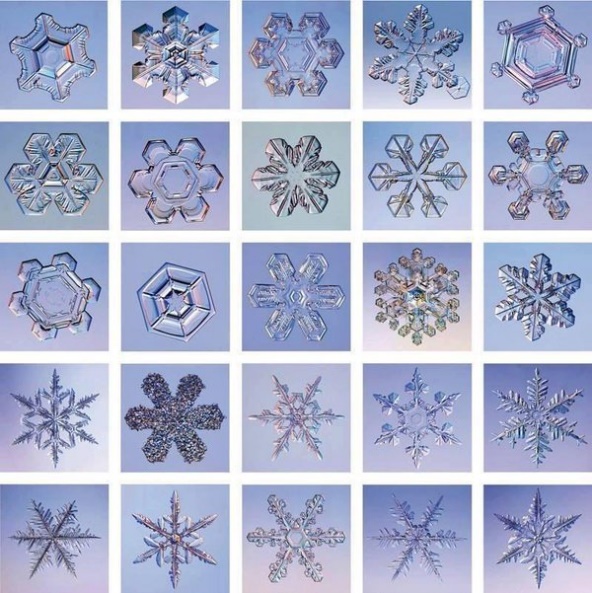
|
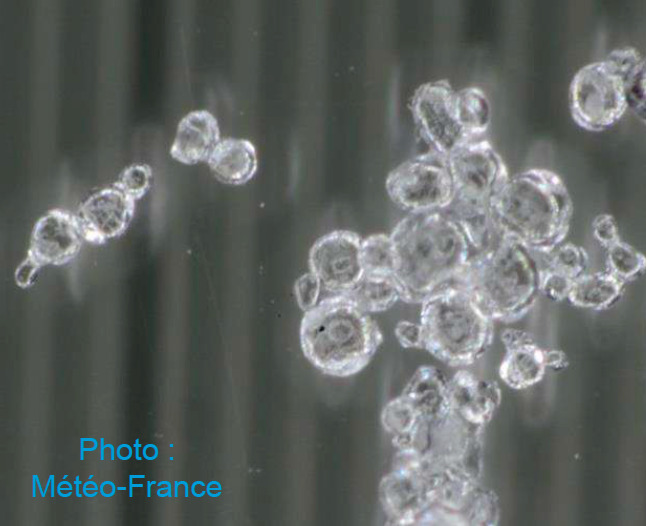
|
|
Source: https://www.acna.cat/geometria-dels-flocs-de-neu/ |
Source: Météo France |
-
Use of additives for snow production: This “belief” is false and mostly arises from old and disused systems such as SNOWMAX. This technology used the membrane protein of the bacteria Pseudomonas syringae that favoured the nucleation of the water molecule for the formation of snow crystals. Due to the costs derived from its use, the questionable real efficiency of this additive, the complexity of application of the product and the precautionary principle (potentially polluting product), in 2006 the French resorts agreed not to use it. Likewise, these additives are not used in the stations of the Spanish and Andorran Pyrenees. In short, we insist that the snow produced contains no other substance than water.
-
Exorbitant water consumption: First of all, it should be noted that the use of water for snow production is not consuming, that is, water is transformed into snow during the ski season and in spring returns to the water cycle (rivers) during the thaw, with insignificant losses (estimated at 2% by sublimation during the manufacturing process). The snow produced, once melted, can be used for other uses (human, industrial, energetic, agricultural consumption, etc.), without observing any decrease in physical-chemical quality.
On the other hand, the permanence of snow on the slopes in spring can cause a delay in the birth and flowering of plants as well as a modification in the composition of the species present. However, it should be noted that the lands where the snowmaking equipped tracks are located have normally been shaped by earthworks and subsequently sown with mixtures of allochthonous species.
In natural tracks with native vegetation (where no earthworks have been done), not enough studies have been possible since these tracks are not usually equipped with snowmaking systems.
In addition, to put in context the volumes of water used for different uses, we show the consumption of different sectors:
-
-
2022 Beijing Olympics: 185,000 m3
-
Agricultural irrigation of corn in Segrià, on an area of 30 hectares of cultivation: 185,000 m3/year
-
Grandvalira ski resort for snow production: 1,000,000 m3/season
-
FEDA for hydroelectric production: 7,000,000 m3/year according to “the Study for the annual preparation of the inventory and Quantification of water expenditure for uses of the Principality of Andorra in 2016″).
-
Private pools in France: 25,000,000-37,000,000 m3
-
It should be noted that water losses in the snow production nets are very small, quickly detectable (water comes under pressure) and repaired immediately, while for the pipes of the urban drinking water consumption network they are usually high (for example, in La Massana (Andorran municupality) with a population of 10,571 inhabitants, network losses are estimated at 508,230 m3/year, which correspond to 40% of the water collected estimated at 1,270,580 m3/year, according to “the Study for the annual elaboration of the inventory and Quantification of water expenditure for uses of the Principality of Andorra of the year 2016″).
-
Storage needs: In the ski resorts of the Pyrenees, the key for snowmaking systems is the availability of enough water. The water comes from catchments on rivers or groundwater located near the ski resorts.
Although it is true that snow production is more necessary at the beginning of the ski season, coinciding with the low water season and therefore, it is necessary to guarantee an ecological flow before starting water catchments for snow production. So, to guarantee the balance between snow production and environmental requirements, it is advisable for ski resorts to store water with the construction of tanks that allow to reserve at minimum 60% of the water needs. Thee reservoirs has to be filled up during high water season (thawing in spring and autumn).
To conclude, it is pointed out that snow production is a fundamental part of the operation of the ski resorts and serves to give stability and prosperity to the areas where the ski areas are located.
The future of snow production must be aimed at the technological improvement of the systems used, in order to increase the efficiency of the equipment: pumps, compressors and snowguns. In addition, ski resorts must play an essential role, with the construction of water storage ponds that contribute to a correct management of the valued resource that is water.





